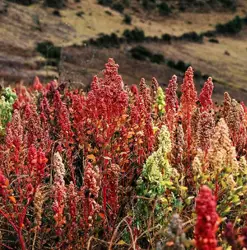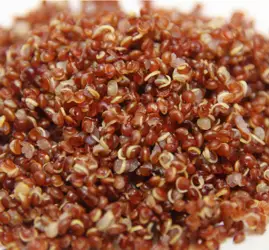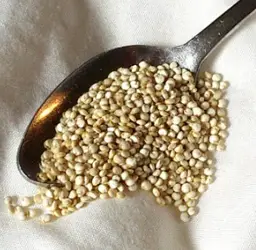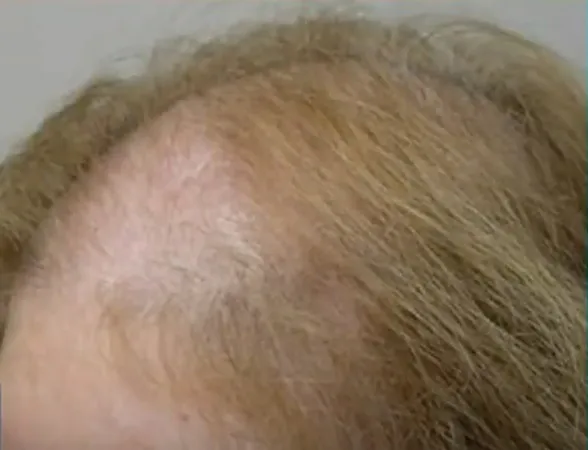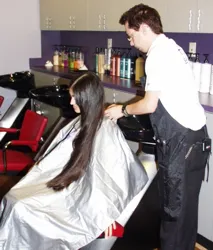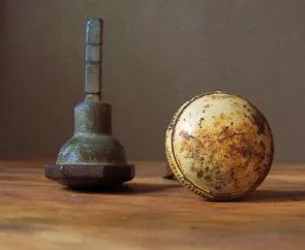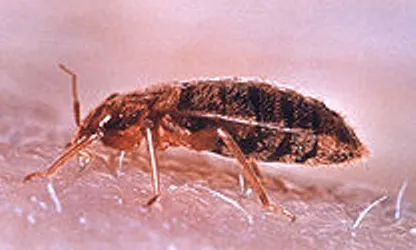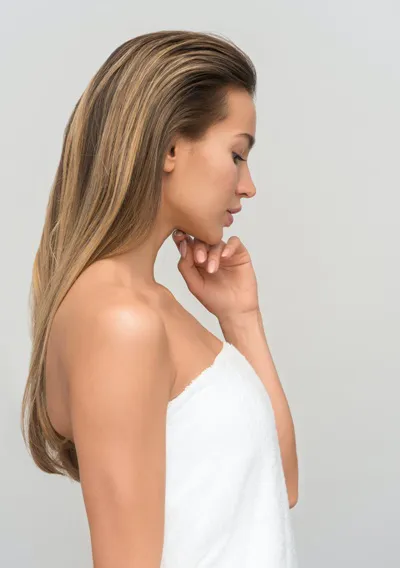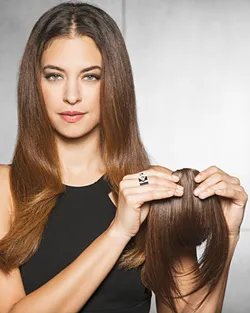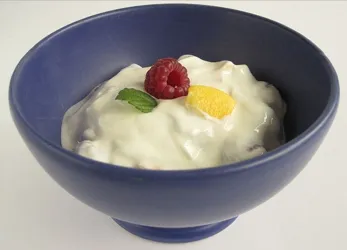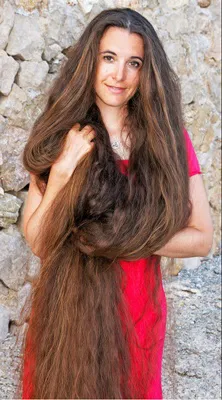
H37: Feedback & Testimonials
Introduction
Quinoa (pronounced kinwa or keen-wah) is a species of goosefoot (Chenopodium quinoa Willd). The leaves actually resemble the foot of a goose. It's a crop grown primarily for its edible seeds. Quinoa is similar to buckwheat and amaranth. It's a grain-like seed which has been cultivated for more than 5,000 years. A pseudo cereal rather than a true cereal or grain, this product is not a member of the grass family. As a chenopod, quinoa is closely related to species such as beets, spinach, and tumbleweeds. It's classified as a broadleaf non-legume. Quinoa is popular with many people because it's a high-protein miracle product which reminds many of grain products, even though it's truly not a grain. One of the reasons many people confuse Quinua with a grain is because it's known as the mother grain in Inca. Other names for Quinoa include vegetable caviar or Inca Rice. It was considered sacred by the ancient Incans for its nutritional value and life-supporting properties. Quinoa Promotes Hair GrowthAlthough the protein in Quinoa is superior and of exceptional quality, the seeds contain a higher level of lysine then wheat. Quinoa has 5.1% lysine compared to wheat's 2.5% based on (g/100g protein)). Lysine is known to promote hair growth, length and strength. Quinoa For Healthy Hair
Packed with vitamins and minerals as well as amino acids, Quinoa can aid in hair growth while preventing breakage. Quinoa also provides a source of amino acids which are balanced in a way which is very complementary to animal and human nutrition. Quinoa includes the following amino acids: Isoleucine (4.0%), Leucine (6.8%), Phenylalanine (4.6%), Tyrosine (3.8%), Cystine (2.4%), Methionine (2.2%), Threonine (3.7%), Tryptophan (1.2%) and Valine (4.8%). Quinoa provides accessible vegetable protein to gently cleanse and nourish your hair. Its amino acids help repair damage to the hair shaft while its proteins coat, strengthen and protect the hair. Staple Of Inca Dietit was a staple in the Inca diet and is still enjoyed regularly by the Quechua and Aymara people, who are their descendents. Quinoa has been consumed consistently over the past 5,000 years by people who inhabit the mountainous and valley regions of Peru, Bolivia, Ecuador and Chile. The indigenous people that have enjoyed Quinoa believe it enriches and oxygenates the blood. Growth And Habit
Quinoa is an annual herb. It is related to the useful weed lambs-quarters (Chenopodium album L.) and it is a relative of several types of beets and spinach. Quinoa plants have a wide range of heights, ranging from 1½ to 6½ feet and come in an array of colors that include white, pink, purple, dark red, yellow and black. The seed comes in large clusters on a panicle resembling sorghum—about the size of millet. The seed has two flat surfaces and a rounded side similar to an aspirin. The seeds range in color from black, to red and pink, white and yellow. Quinoa is a hardy, drought-resistant plant that grows well with little rainfall and at high altitudes. Quinoa tends to grow in South America in areas that are drought-prone, with hardly any fertility. The plants can tolerate light frost but should not be exposed to temperatures below 28 degrees Fahrenheit. The plant’s seed is similar to sorghum at maturity. Quinoa’s Nutrition-Packed PunchQuinoa has recently burst onto the health scene and it is viewed as a super-food and a super crop. While treated like a grain in American cooking, The protein in Quinoa is extremely high quality and much denser in protein than true cereals, which stem from grassy plants.
Comparable to Quinoa is higher in lysine (which promotes hair growth) than wheat. The amino acids quinoa seeds contain are balanced in a way that is very complementary to animal and human nutrition. Quinoa is also lower in sodium and higher in calcium, iron, copper, zinc, manganese, potassium, phosphorous and magnesium than barley, corn or wheat. Minerals and amino acids have been proven to aid in the conditioning of hair and skin. Besides yielding a grain-like substance served like rice, Quinoa is also useful in the making of flour. Quinoa flour is used as a starch extender in combination with corn meal, grains and wheat flour, in the making of baked goods and processed foods. This useful plant is also used for cereal, different types of soups, and alcohol. Quinoa In Hair ProductsQuinoa is loaded with hydrolyzed protein. In fact, it's thought to be one of the highest amounts available from a plant source. It's thought to be an ideal component for all hair care products such as shampoos, conditioners and styling products. Hair needs protein to thrive. Protein binds to the hair shaft and penetrates the cortex which helps to strengthen the hair. Protein repairs hair strands from the inside out. It contains amino acids which are building blocks to help create healthier hair. Many new shampoos and conditioners are utilizing this beneficial herb. Look for hydrolized quinoa protein. This type of formulation is believed to form a protective barrier over the hair shaft, while it encourages sheen. Its humectants attract moisture from the air, while generally conditioning your hair, yielding a well-defined curl pattern and a sexy head of hair. NexxusNexxus recently launched a new product line—Phyto Organics ChromaLife Colour Retention System—that relies on quinoa’s amazing benefits. PhytoSpecific’s Moisturizing Styling Balm also contains quinoa oil. And Aveda’s Damage Remedy Daily Hair Repair contains quinoa protein, too. Quinoa is packed with an amazing amount of protein — one of the highest available from a plant source — it makes a perfect partner for shampoos, conditioners, and styling products. Since hair is an outgrowth of protein, quinoa works wonders on repairing your strands from the inside out. Plus, quinoa has amino acids, which are not only nutritious, but work as the building blocks to create healthy hair. Those Incans were really onto something. Chock Full Of Vitamins A, B2, E & MagnesiumQuinoa can be grown almost anywhere in the world under varying conditions and is chock full of vitamins A, B2 and E. Quinoa has been selected by the Food and Agriculture Organization as one of the leading crops that promises worldwide food security. In addition to the general good it can do for your body, there is talk that quinoa may actually directly benefit your skin and hair. The high levels of magnesium promote skin elasticity and regenerate skin cells, while vitamin B2 (riboflavin) builds up connective tissues and is integral to cell reparation. But is there any evidence? I couldn’t find any scientific studies that have been conducted that support quinoa’s skin and hair improving claims, but I don’t think the idea is farfetched at all. They have published an article that claims when quinoa is applied to the skin correctly, you benefit from anti-aging and anti-dehydrating properties. DIY Quinoa Facial MaskThis mask seems worth a shot. And while plenty of people are allergic to wheat and other grains, most people won’t have an issue with quinoa irritating their skin, as it is usually non-reactive due to its lack of gluten. So what can this delicious grain do for your beauty? Well, for one thing, the Quinoa is also a natural protein that is rich in magnesium, vitamin A, E, D and F, and phosphorus. When combined in a facial mask recipe, the Quinoa flake provides anti-aging and anti-dehydrating properties, leaving your complexion soft, smooth, and nourished with rich moisture. So what are you waiting for? Let’s find out how to start adding Quinoa to your beauty treatments! To create your Quinoa facial mask, you’ll need the following ingredients: 6 oz plain yogurt, ¼ cup of Quinoa cereal cooked in soy milk, 2 drops of Mimosa oil and 2 egg yolks. The first step in this recipe is to cook the Quinoa cereal in soy milk over medium-low heat. Once cooked, allow the mixture to cool. Do not add sugar to this mixture because sugar promotes wrinkles - not to mention the fact that you’re going to be applying this mask to your face, not eating it! The soy milk offers nourishing properties to the skin, including the ability to repair sun damage, improve the skin’s elasticity and releases acids and energy into the epidermis for strength. After your Quinoa cereal and soy milk is cooled, pour it into a blender and add the remaining ingredients and blend well. The presence of Mimosa oil works to regenerate tired and dull skin, stimulates the immune system and improves the skin’s healing process. The two egg yolks add rich levels of vitamin E and F, as well as its own nourishing and stimulating properties to the skin. After blending the ingredients together, apply the facial mask to your face and neck. Leave the facial mask on for anywhere between 10-20 minutes. Use this time to sit down and relax, read a book or simply take a cat nap (just make sure you don’t get your mask onto your pillow or sheets!). When the time is up, simply rinse off the facial mask with warm water, pat dry and apply moisturizer as needed. Using this nourishing facial mask once a week will quickly get your complexion back in shape in a way that is natural and effective. Plus, if you have any Quinoa cereal left over, you can make a nutritious meal that you won’t feel guilty about eating.
- Revised: 02/01/2011 | ||||||||||||
| If you want to talk more about this or other hair care articles on HairBoutique.com or anywhere else, please post a message on HairBoutique.com's Hair Talk Forums.
|
Social Media Network Information
Please follow us on Twitter at: https://Twitter.com/HairBoutique. I look forward to meeting new people from all walks of Twitter and learning from their Tweets.


